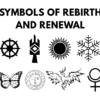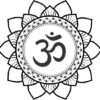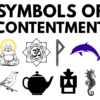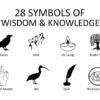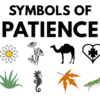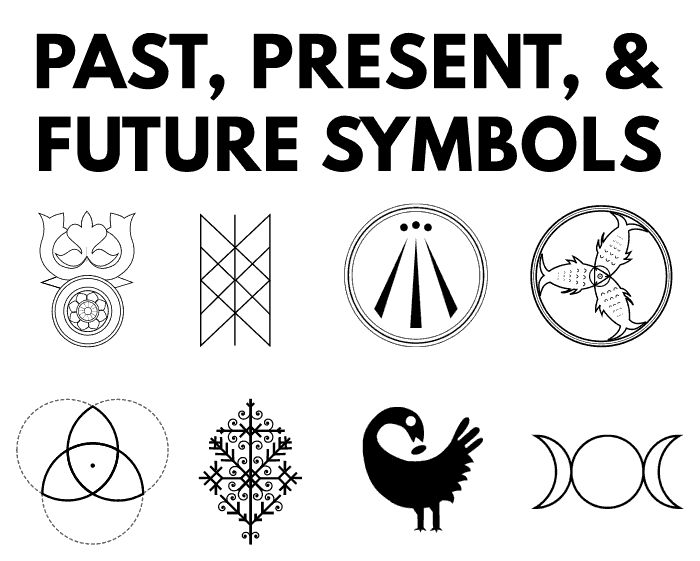
The past, present, and future impact us every day. Our past experiences mold us into the people we are in the present, and our actions today dictate who we will be in the future. Each concept relies upon the next to uphold it, creating an intricate web of connectivity. Also, we must learn from the past, by reflecting on it in the present, to change our reality in the future. All cultures have varied symbolism to represent these ideas.
In this article, let’s look at 20 ancient and powerful symbols of past, present, and future to discover what these concepts mean for different people around the world.
20 Symbols that represent the Past, Present, and Future
1. 3 Strand Braid
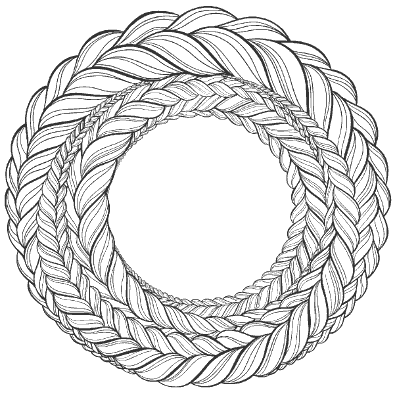
The classic three-strand braid is worn in many cultures to symbolize past, present, and future (each strand represents the past, present, and future, respectively). Native American tribes braid their hair to indicate an intergenerational connection. The braids represent the impact of the past on our present. They remind us not to forget the past and the people who have come before us.
The Jewish people eat a braided loaf called challah bread on celebratory occasions. The loaf symbolizes the past struggles of the Jewish community. It highlights that the present celebrations are only possible because of others’ sacrifices, and reminds us that our own sacrifices today will help future generations.
2. Sankofa
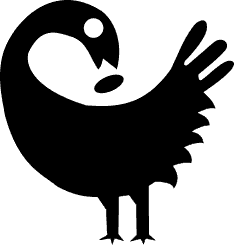
Sankofa (meaning to ‘to retrieve‘ or ‘to go back and fetch‘) is an Adinkara symbol that depicts a mythical bird with its head turned backward. The bird is also shown holding a golden egg in its beak. The bird turning its head backward represents self-reflection or more specifically, reflecting on our past. Whereas, the golden egg symbolizes the important life lessons or gems of wisdom that one can learn through such reflection. It is only by learning these life lessons in the present can we steer our future in the right direction and reach our highest potential.
Thus, Sankofa is the perfect symbol that represents the past, present, and future, as it teaches us the value of connecting the past with the present to help shape our future.
3. Tree of Life
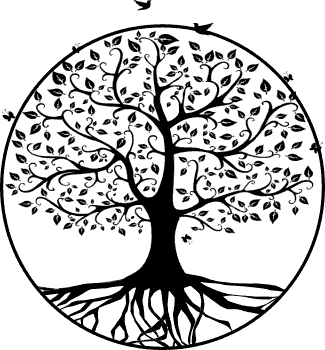
The tree of life is a multicultural symbol that connects us to the earth and sky or physical and spiritual realms. Its roots are a reminder of our past. They are what hold us in place, giving us a baseline for our personality and principles.
The trunk of the tree represents our present. It grows from the roots of our past, representing the importance of our initial experiences in shaping who we are. Weak, uncertain roots create a gnarled trunk. Strong, deep roots create a strong trunk.
The branches, leaves, and fruit represent our future. This part may change with the seasons, representing hope and possibility for things to come.
4. Web of Wyrd
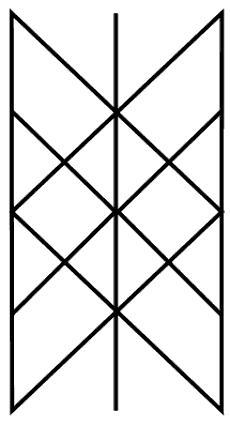
The Web of Wyrd is an ancient Norse rune symbolizing our past, present, and future lives. The web is said to be made by the Nornir, or mystical weavers of destiny. It is a symbol of inescapable fate, a net crafted and woven by the keepers of the future which is spun into the thread of our lives.
The symbol comprises nine individual staves interwoven together. As a whole, the symbol contains a crude depiction of all the Norse runes. This is a symbol of everything all at once and represents the infinite choices we have and all the different roads we can walk throughout our lives.
5. Awen
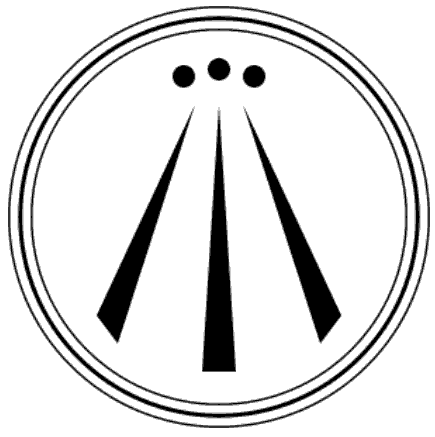
The Awen is an ancient Welsh symbol of inspiration and imagination. It is druidic in nature and widely used by bards, poets, and other creatives. With three rays leading up to three singular points, the Awen is a powerful symbol of past, present, and future.
The Awen signifies our passage through the three stages of life. From birth to adulthood to death, we have rich and varied experiences. We glean inspiration from them all, no matter when or how they come. In this way, the Awen is a reminder of our constant vitality at any age and the importance of experience throughout our lives.
6. Lotus Flower
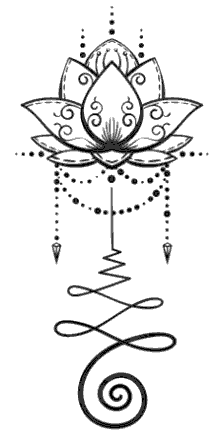
The lotus is one of the most widely-used symbols in the Buddhist repertoire of symbology. Bearing buds, flowers, and seed pods all at the same time, the lotus’ unique array of parts perfectly represents how past, present, and future continue to impact us at all stages of life.
More specifically, the way the lotus grows is indicative of our past, present, and future as we walk the path to spiritual enlightenment. We are born under the murky waters of the past. At present, we are rising upwards as we learn and grow. In the future, we will reach the surface and attain enlightenment.
7. Triskelion
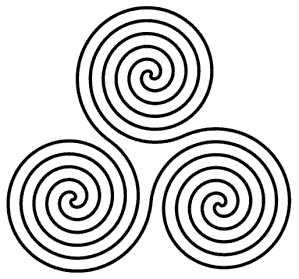
The Triskelion consists of three spiraled branches sprouting from a single center point. The word comes from the Greek ‘Tri’, meaning three, and ‘Skelos’, meaning legs. Variations even include a triskelion with human legs instead of spirals. No matter how it’s drawn, the symbol represents the passage of time through past, present, and future.
It is the symbol of the sacred three or the idea that important things come in groups of three. The triskelion can represent the cycle of life, death, and reincarnation. It may also signify the triple-goddess of maiden, mother, and crone, or even the concept of father, son, and holy ghost for Christians.
8. Triquetra
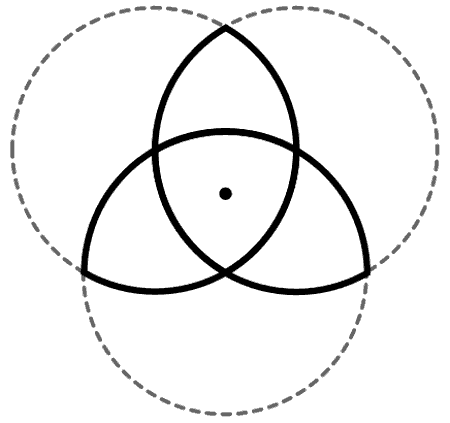
The Triquetra is a powerful ancient Celtic symbol also known as the Trinity Knot. Its classic shape is composed of three interlocking arcs, or Vesica Pisces, which merge to form a three-pronged depiction of past, present, and future. The Triquetra showcases the trifecta of time and the power of three.
The Triquetra has three distinct points, yet its center is connected in an inextricable snarl. This distinguishes past, present, and future as unique points on a timeline while solidifying the idea that each point is reliant on the others to exist. Triquetras can also symbolize the life cycle, the seasonal cycle, and the nuclear family of mother, father, and child.
9. Warrior II Yoga Pose
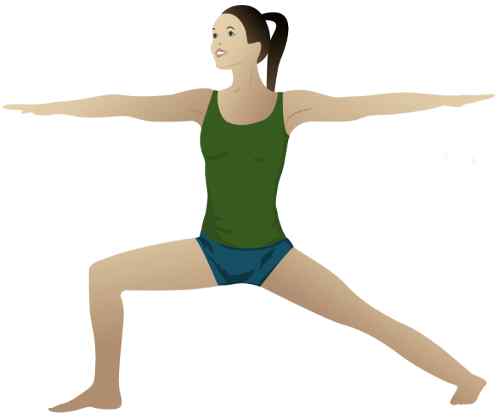
Warrior II is an essential yoga pose conducted with one leg extended to the back and the other bent facing forward. One arm also reaches back and the other stretches forward. The chest is aligned towards the side, while the eyes gaze to the front. Warrior II is the perfect pose representing the past, present, and future.
The back leg represents the past, providing a strong base for the rest of the pose to stand straight and true. One arm reaches back to pay homage to the past but the other reaches forward into the future. The torso is aligned in the present, while the eyes look forward in hope for things to come.
10. Tripundra (Three Horizontal Lines)
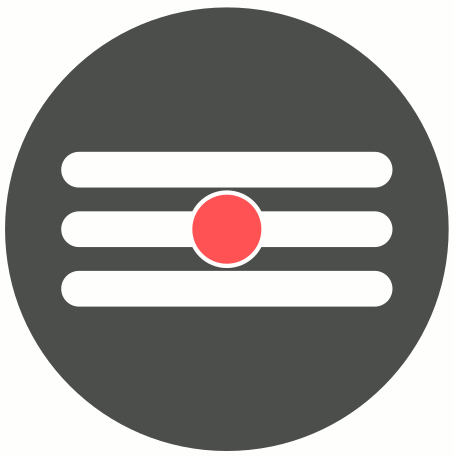
The Tripundra is a classic Hindu symbol consisting of three white horizontal lines stacked vertically atop each other. On the middle line rests a small red dot. The symbol is usually worn as body art and painted on the forehead. For Hindus, the three white lines symbolize three godly activities: creation, sustenance, and destruction.
These can easily be translated to refer to our human timeline of past, present, and future. The red dot at the center of the Tripundra represents the unification of spiritual energy and material things. It is a reminder that all humans must pass through these three stages, repeating the cycle until we reach enlightenment.
11. Claddagh
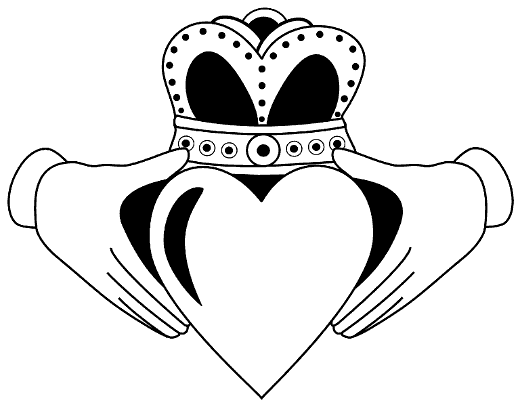
The Claddagh is an old Irish symbol featuring two hands grasping a heart and a crown resting atop it. The heart symbolizes love, the hands represent friendship, and the crown symbolizes loyalty. The Claddagh is a romantic symbol extremely popular among couples.
The two hands may be said to represent the past, wherein both were single. They join together at present, with the heart representing their unified love. The crown indicates the future and all the possibilities which come from their union.
12. Infinity Sign
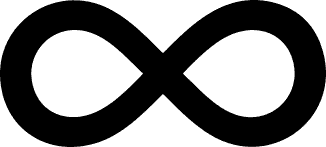
The symbol for infinity is reminiscent of two ovals set together in an endless knot. We aren’t sure where the knot begins, nor where it ends. In a way, it has no beginning or end—the perfect symbol for past, present, and future, especially as it relates to the universe.
No one really knows much about the origins of the universe. Theories abound, but the truth is that we’ll never truly know. The same goes for its end. We cannot foresee it. The future is a vortex of unknowns and boundless possibilities. The only certainty we have is the present, a small space at the center of infinity where we happen to exist.
13. Triple Moon
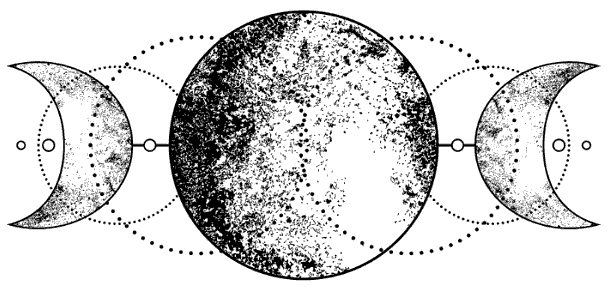
The triple moon is an ancient feminine symbol associated with witchcraft and the divine feminine. It features the moon in three stages. On the left the moon is waxing, in the center the moon is full, and to the right the moon is waning. In this way, the triple moon characterizes our journey through past, present, and future.
The moon becomes full only after the process of waxing and soon after will wane into a small sliver. The lunar process repeats itself in a never-ending cycle. The triple moon signifies this passage of time for the feminine and the three stages of life from maiden, to mother, to crone.
14. Valknut
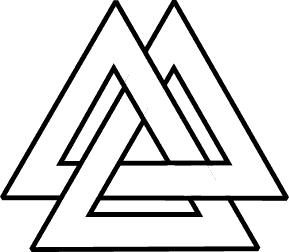
The Valknut triangular symbol drawn with three interlocking triangles. It represents the magical practice of Seidr and belongs to the great god Odin. With its unique shape, the Valknut also symbolizes the power of three. Three is a magical number for the Norse people. It represents the cycle of birth, life, and death.
This cycle signifies the passage of time. It characterizes the past, present, and future for the earth, the gods, individuals, and society as a whole. The concept can be expanded to include other important threes like mind, body, and spirit, or creation, preservation, and destruction.
15. Austra’s Koks
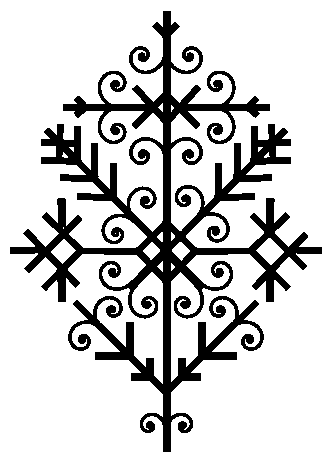
The Austra’s Koks (Tree of dawn) is a beautiful Latvian symbol that is very similar to the ‘Tree of Life’ (discussed earlier). The roots of the tree are said to represent the underworld, the trunk (or middle) of the tree represents earth/existence and the crown of the tree represents the heaven or upper world. The three sections of the tree also represent the linkage/connection that exists between the past, present, and future. In addition, the tree also symbolizes world order, family, strength, good luck, and blessings.
16. Trident/Trishula
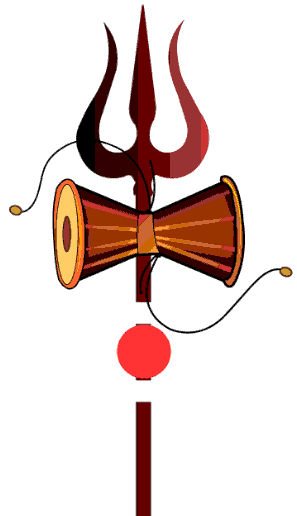
The three prongs of a trident represent the past, present, and future. In Hinduism, the trident also known as ‘Trishula’ is the weapon of Lord Shiva (one of the three main Hindu gods) and represents his form as the creator, preserver, and destroyer of the universe. The trident is also painted on the forehead of Lord Ganesha (Shiva’s first child) and is supposed to represent Ganesha’s mastery of these three phases of life. The trident is also the weapon of Greek God Poseidon and his Roman equivalent, Neptune.
17. Tridatu thread (Balinese)
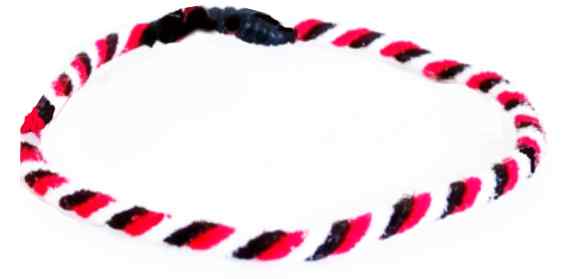
The Tridatu is a tricolored thread worn by Hindus in Indonesia. The three colors of the thread – black, red, and white, represent the interconnectedness that exists between the past, present, and future. It also represents the Trimurti or first Three Gods — Brahma (the creator), Visnu (the preserver), and Shiva (the destroyer). The thread is worn as a symbol of positive energy and protection.
18. Three Fishes One Head
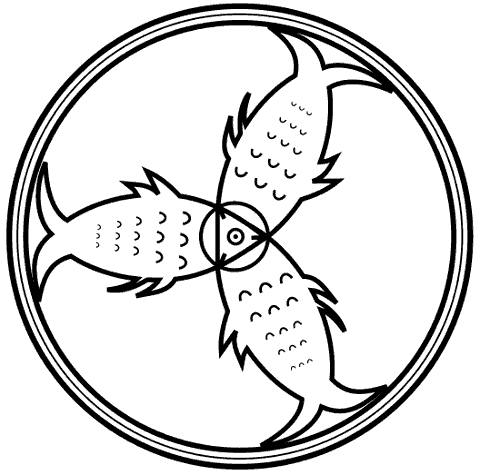
‘Three fishes one head‘ is an ancient symbol found across various cultures and religions including Hinduism, Buddhism, and Christianity. The symbol is similar to the triquetra (discussed earlier) and represents the trinity or the three aspects of life. It can also be used to represent the past, present, and future.
Some other related symbols include the Borromean Rings (three interlocking circles) and the Trefoil symbol.
19. Equilateral Triangle
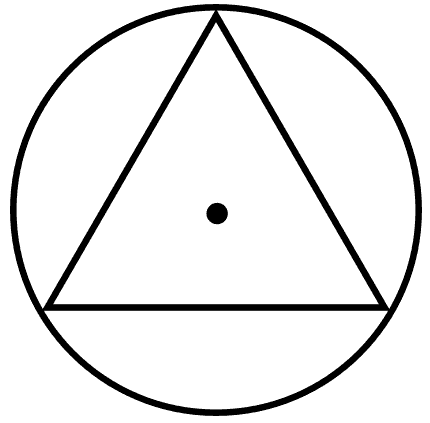
An equilateral triangle has three sides of equal length. These sides represent the past, present, and future. The circle surrounding the triangle represents the cyclic nature of life and the dot at the center represents oneness or the fact that the past, present, and future are simply a figment of the mind and everything just is without any distinction or separation.
20. Triratna
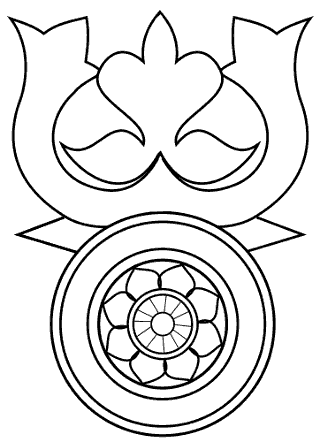
The Triratna (translated as Three Jewels) is a Buddhist symbol as old as it is important. Found in ancient caves, outside temples, and even on historic coins, the Triratna represents the three jewels of Buddhism (Sangha, Dharma, and Buddha) among other important aspects like the noble eight fold path and spiritual enlightenment.
The symbol can be divided into three sections; the top section being the Trident, the middle being the Vajra and the bottom being the Dharma Wheel. The Trident on the top represents the three jewels, the Vajra represents spiritual power and the Dharma wheel represents the eight fold path.
The three jewels can be interpreted as each with their own place on the wheel of time. First is the Buddha, where ideas come from. These ideas are the Dharma, encompassing all Buddha’s teachings. Those who follow the Dharma are the Sangha or sacred practitioners.
To take refuge in the three jewels is to declare oneself a Buddhist. It is to simultaneously embrace the past, present, and future as the forces which brought you to this point while striving to one day leave the cycle of life and time to reach enlightenment.
In Conclusion
Past, present, and future play a constant role in our lives. When we feel overwhelmed by the present, we can draw strength from remembering our past and take solace in our hope for the future.
By stepping back and examining the process of time as it relates to us, we can gain our footing in an uncertain world. Next time you need some spiritual grounding, bring these symbols near and find your confidence once again.


